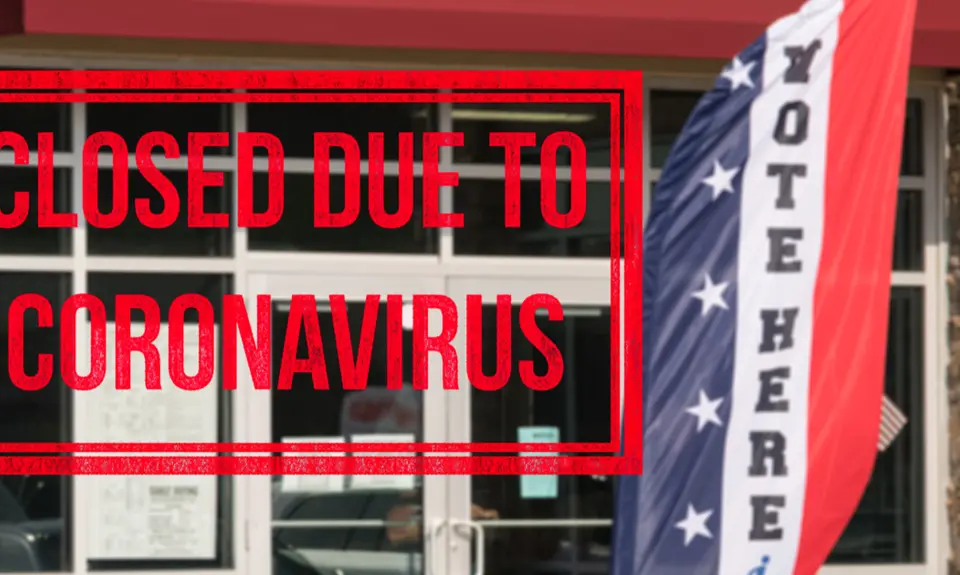This post originally appeared on Medium.
Voting rights, which should be sacred in a democratic society, took another devastating hit on April 6, with the U.S. Supreme Court’s conservative and right-wing justices denying thousands of Wisconsin voters the ability to cast a ballot, and forcing millions of others to decide whether to brave massive lines and risk their lives in order to be counted.
This is, as voting rights advocate Sherrilyn Ifill said, unconscionable. But, sadly, it is not surprising. Because the Republican Party that the modern right-wing political movement has molded in its own image has a long history of viewing voting rights not as sacred but as dangerous to their political survival.
Even the passage of the Voting Rights Act, a crowning achievement of the civil rights movement, did not put an end to the systematic and strategic denial of some Americans’ voting rights.
Right-wing political strategist Paul Weyrich, who helped elect President Ronald Reagan and launch the religious right political movement, was unashamed about his outlook. “I don’t want everybody to vote,” he said 40 years ago, adding that “our leverage in the elections, quite candidly, goes up as the voting populace goes down.” For four decades they have worked to make this a reality.
Their objective remains the same but their efforts to achieve this have increased exponentially. Forty years after Weyrich’s infamous statements, President Donald Trump denounced efforts to include voting rights protections in legislation addressing the disruptions caused by the coronavirus pandemic. He warned that encouraging high levels of voter turnout would mean “you’d never have a Republican elected in this country again.”
Other Republican politicians over the years have admitted that the party’s systematic effort to make it harder for people to vote — voter ID laws, restrictions on voter registration drives, reducing early voting, eliminating polling places — and other manipulations of our election systems are not about protecting the integrity of our elections, as they claim, but are exercises in raw partisanship in order to cling to control.
They are about taking and holding power they are not entitled to and would not gain if elections were more free and fair. People For the American Way was calling voter suppression “the new face of Jim Crow” back in 2006. And that was before the conservatives on the Supreme Court, led by Chief Justice John Roberts, gutted key provisions of the Voting Rights Act and gave a green light to right-wing state legislators who were ready and eager to rush new voting restrictions into law, restrictions that by design and by impact hit minority voters hardest. His laughable rationale: voter protections were no longer needed.
This year, Republican politicians in Wisconsin refused to consider proposals to change the date of the primary election; they believed they would benefit from a smaller turnout. Right-wing dominated state and U.S. Supreme Courts overturned the governor’s executive order for a new election date. And the court even rejected plans to extend the deadline for absentee ballots, even though the flood of requests by people who didn’t want to risk voting in person meant that many could not receive absentee ballots in time to meet the deadline.
The Wisconsin mess has removed any doubt that Trump’s judges are playing their part in the right-wing political machine’s multifaceted voter suppression strategies, which involve courts as well as legislators at state and federal levels, along with presidents and governors. As one of my colleagues said, the Supreme Court’s right-wing majority put not just its thumb, but its entire fist, on the scale in Wisconsin last week. And it’s particularly troubling that they went all in on voter suppression in Wisconsin, as it could be the state that decides the winner of the presidency in November.
Republican voter suppression tactics are being deployed all across the country in this crucial election year, one in which the COVID-19 pandemic has created a whole new set of uncertainties and obstacles.
There are steps we can take to protect Americans’ ability to vote. We can push for expanded opportunities to register online and vote by mail. We can insist that polling places are accessible to all communities. We must remain vigilant that voting and counting procedures, like signature match requirements, are not implemented in ways that fall hardest on communities of color.
We can and must do all those things. And there is one thing more than we must commit ourselves to doing this year. The only way we’re going to save our democracy is by voting right-wing vote suppressors out of office. Let’s do it.
